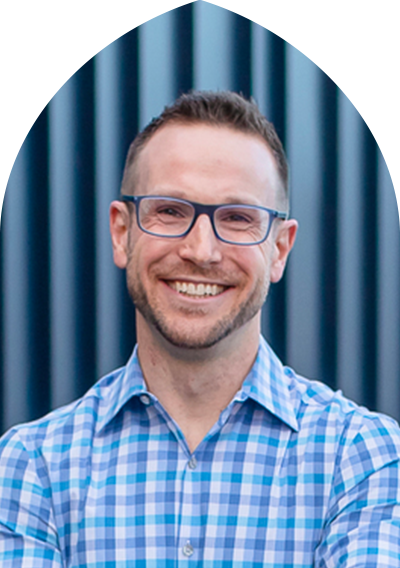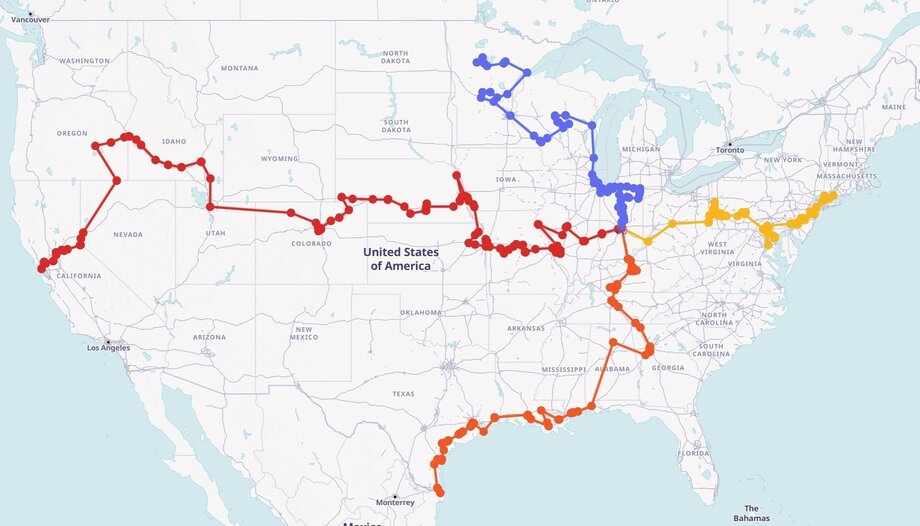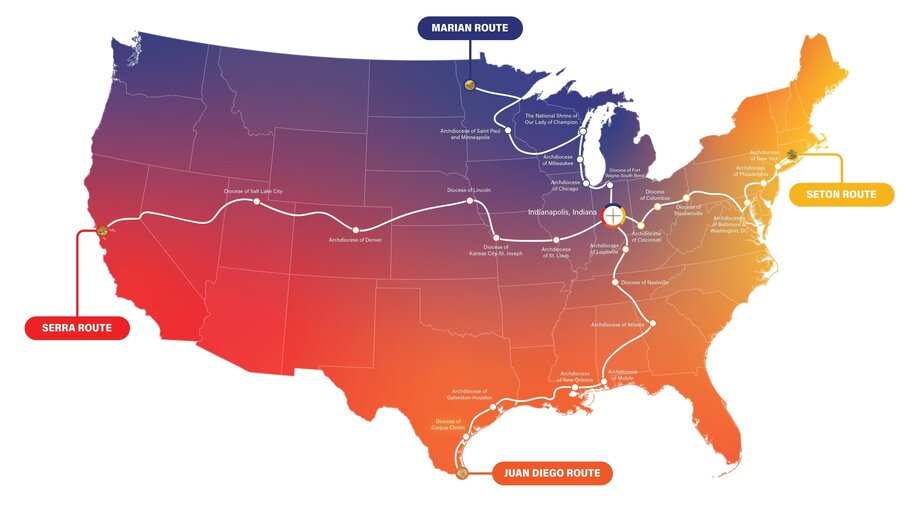
The National Eucharistic Pilgrimage begins in the United States. From May 17 to July 16, thousands of Catholics will take to the streets of the country along the four established routes, in order to prepare the Eucharistic Congress.
Joel Stepanek is the event's vice president of programming and administration. His job is to coordinate all the teams mobilized for this great event in the country. Married and father of three children, he has been involved in youth evangelism for a long time.
As this interview shows, for him, this Eucharistic Pilgrimage is a great opportunity for American Catholics, a historic event in which they have invested many resources and efforts to promote the Eucharistic Revival.
What is the origin of this Eucharistic Pilgrimage and why do you think it is important for it to be held before the National Eucharistic Congress?
- The National Eucharistic Pilgrimage came about during the planning meetings for the Congress. We thought it would be wonderful to make a pilgrimage with the Blessed Sacrament to Indianapolis in the weeks leading up to that moment of Eucharistic Renewal. Knowing that thousands of Catholics will be in Indianapolis, there are also many who will not be able to be there and this Pilgrimage allows those people to have a meaningful participation in the Congress.
There are many local dioceses that are planning events that will allow many more people to be part of this project that the Holy Spirit is doing in the United States. And the main reason for the Pilgrimage is to pray. We have four routes with our Lord and we are going to use that time to pray for our country.
The four routes have different titles: Mary, Elizabeth Ann Seton, Juan Diego and Junipero Serra. Why did they choose those names?
- The three saints are close to the points of origin of these routes. They made sense as patrons of the routes that start from each region because of the connection they have with them. The Marian Route, on the other hand, passes through ChampionWisconsin, which is the only apparition of Our Blessed Mother in the United States.

How is the process to coordinate so many people in such an important event?
- Our wonderful team has been working with the local parishes and dioceses to help them organize these events. We actually bring the pilgrims and the Blessed Sacrament, but it is the local parishes and dioceses that organize the events. So the National Eucharistic Pilgrimage has been a catalyst for dioceses and parishes to organize their own Eucharistic events.
In fact, much of the work has been about connecting the dots. We are excited to tour these places and celebrate the Eucharist with so many people. People will gather to pray, serve and worship Christ in their own areas.
Have you learned anything new about parish or diocesan life from working with them on this project?
- I've been very blessed by how enthusiastic people are about this. I think sometimes in the U.S. Church there can be an idea that dioceses are too bureaucratic, that local parishes can be more about maintenance than mission.
However, wherever we have gone they have really stepped forward into something new and evangelizing.I have been very edified by the willingness of the people in the places we have gone, not only do they want to do something for their people, but they are enthusiastic about it.
There will be processions with the Blessed Sacrament, what measures will you take to ensure that Christ in the Blessed Sacrament is guarded and respected during the Eucharistic Pilgrimage?
- Each route will have with it two chaplains, many times they are priests, at a couple of times there will be deacons. So the ordinary ministers of the Eucharist will always be responsible for the procession with the Blessed Sacrament.
The priest chaplains and deacon chaplains have specific instructions on how the Blessed Sacrament is to be deposited at the end of the day, as well as emergency precautions. If anything should happen during the course of the pilgrimage, from bad weather to a road blockage due to a protest, we have thought about it and made provision for it.
Can people with reduced mobility or those who, for various reasons, are unable to make the entire route participate in the Eucharistic Pilgrimage?
- They can do it, and that's why I think the work of the local parishes and dioceses has been so critical. Much of what we will do with the pilgrimage, in terms of public events, does not necessarily involve walking.
Certainly, there will be processions in the cities and people will be able to join in at various points along the route to walk with the pilgrims. But many times, there will be events in the parishes with a Eucharistic exposition, prayer evenings, penance services, etc.
People with mobility problems will have many opportunities to participate in any of these events, which are part of the National Eucharistic Pilgrimage.
Who are the perpetual pilgrims and how have they been chosen?
- The Perpetual Pilgrims are a group of young adults from all over the United States who applied to participate. They are young people between the ages of 21 and 29 who wanted to walk with the Lord for eight weeks. They went through a fairly dense interview process with written applications. Once selected, they have gone through a formation process that included an initial retreat in February and weekly formation sessions, as well as individual meetings with our team, to prepare them for the physical and spiritual challenge that this pilgrimage will entail.
You are very involved in youth ministry, what do you see in the attitude of young people in the Church that gives you hope?
- The seeds of the Renaissance are in the young Church. Teenagers and young adults have been attracted to the Eucharist. They have a very Eucharist-centered faith, which is good. I think it's been beautiful to see youth ministry and young adult ministry grow over the last few decades. For young Catholics in the United States, this moment is especially significant because it provides a moment of unity within the Church.








